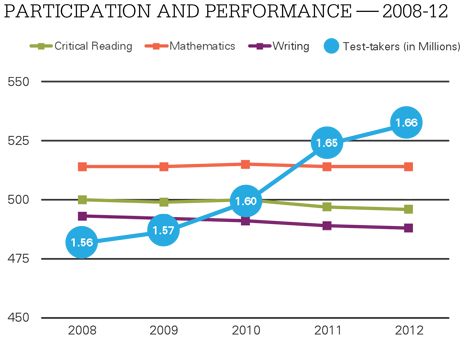Study Shows Wage Disparities Between Degree Programs and SchoolsA new study of the first-year earning power of students graduating from public colleges and universities in Tennessee finds that the school you attend and the major you select can make a big difference in what you earn. In some cases, an associate's degree pays more than a four-year diploma.
The report is the result of a partnership involving the Tennessee Higher Education Commission (THEC), the state Department of Labor and Workforce Development, and College Measures, a nonpartisan organization that provides data and analysis on higher education. College Measures is a joint venture of the American Institutes for Research (AIR) and the Matrix Knowledge Group. The study was funded by the Lumina Foundation.
The findings, which draw upon data not previously available to the public, examine the average first-year earnings of recent graduates from two-year and four-year institutions across Tennessee. The study also compares earnings for graduates from individual degree programs at individual colleges. The report is available on the AIR website. Tools to examine the data can be found on the College Measures and THEC websites.
“This partnership between the Higher Education Commission, the Department of Labor, and College Measures represents a national model of collaboration to provide real-time data that benefits students and their families,” said Richard Rhoda, Executive Director of THEC.
“Students who use the dashboard will be in a stronger position to make an informed decision about their program of study, regardless of their area of interest. In the current economy, this kind of information is a necessity, not a luxury,” Rhoda said.
Mark Schneider, a vice president at AIR and president of College Measures, said, “The goal of this report is to provide information that helps everyone involved in higher education – students and their parents, those who run the institutions, and the policymakers serving the citizens of the state.”
The report found that for all nine Tennessee four-year public campuses, the average wage for graduates with a bachelor’s degree is $37,567. For graduates of the 13 community colleges, the average wage is $38,948, more than $1,300 higher than graduates at four-year institutions. There is a wide range between the highest and lowest incomes of those earning bachelors, associates, and certificates.
Colleges and Universities
Among four-year institutions:
* University of Memphis graduates earned the most, $40,401, while University of Tennessee at Chattanooga grads earned the least, $35,650.
* The average earnings vary widely among the degree programs. Health profession majors were paid an average of $51,000; psychology majors, just under $30,000.
* The bachelor’s degree programs with the highest first-year earnings were health professions from the University of Memphis (almost $60,000) and from UT-Martin (about $59,000). Graduates of these programs earned $5,000 to $10,000 more than graduates with the same degree at other Tennessee campuses. The state’s lowest earning health profession graduates came from Tennessee State University ($46,000).
* The lowest paying degrees were philosophy and religious studies at Austin Peay State University, with a first-year wage of $20,500, and foreign languages at East Tennessee State University, which paid $25,000. Earnings for graduates with the same philosophy and religious studies degree at UT-Martin earned almost $7,000 more than those from Austin Peay State University.
Community Colleges
* Wide disparities in earnings were found among graduates in Tennessee’s community colleges, depending upon the degree and certificate programs taken.
* The average first-year earnings of a graduate with an associate’s degree from Jackson State Community College, almost $43,000, is more than $10,000 higher than the average earnings of a graduate of Pellissippi State Community College.
* There are sharp differences – ranging from $5,000 to $21,000 – between graduates with different degrees. Career and technically oriented associate’s degrees offer higher starting salaries. Tennessee community college graduates with a degree in health professions earned nearly $47,000, while those with education degrees made less than $26,000.
* Depending on the program and school, some certificate-program graduates enjoy initial earnings of more than $40,000. Graduates with a certificate in construction trades from Nashville State Community College earned more than $66,000 during their first year in the workforce, and certificate holders who studied health professions at Columbia State Community College earned more than $50,000.
The study links student records with unemployment insurance data and focuses on the first-year earnings of students who graduated from a Tennessee institution from 2006-2010. The study addresses only graduates employed in Tennessee and their initial wages, which may not indicate long-term earning potential. However, as the authors note, “a state can see which campuses and programs are contributing the most toward building the state’s economy.”
Similar data showing how recent graduates of Arkansas colleges and universities have fared in the labor market are now publicly available on the website
collegemeasures.org, a joint venture of the American Institutes for Research (AIR) and the Matrix Knowledge Group. The data includes detailed information on the average first year earnings of graduates, broken down by the institution attended and the degree or certificate earned.
About AIR
Established in 1946, with headquarters in Washington, D.C., the American Institutes for Research (AIR) is a nonpartisan, not-for-profit organization that conducts behavioral and social science research and delivers technical assistance both domestically and internationally in the areas of health, education, and workforce productivity. For more information, visit
www.air.org.
You have read this article with the title September 2012. You can bookmark this page URL http://universosportinguista.blogspot.com/2012/09/big-gaps-in-earnings-for-college-grads.html. Thanks!



